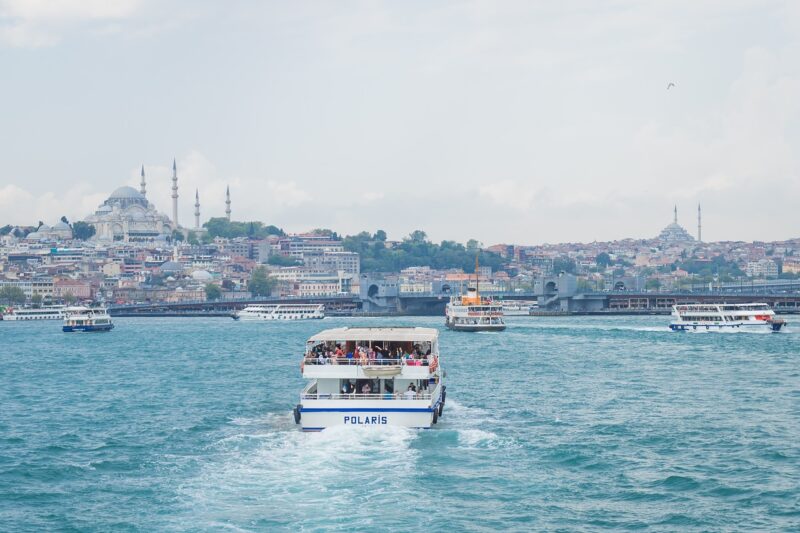The Role of Ferries in Connecting Isolated Communities Around the World
November 11, 2024

Ferries have served as crucial lifelines for isolated communities, providing not only transportation but also enabling cultural exchange and economic development. In many regions, the waterways act as both barriers and bridges, and ferries play a pivotal role in connecting people, goods, and services across these natural divides. From the remote islands of the Caribbean to the vast fjords of Norway, ferries have a storied history that often reflects the resilience and adaptability of the communities they serve.
1. A Historical Perspective on Ferries
The use of ferries dates back centuries, playing an essential part in trade and travel before the advent of modern infrastructure. Early ferries were simple boats operated by locals to transport people and goods across rivers or bodies of water. Over time, as commerce expanded and populations grew, ferries became increasingly important as formalized operations, often receiving support from governmental bodies.
In many cultures, ferries are more than just transport systems; they are part of the community’s heritage. For example, the Staten Island Ferry in New York is not only a means of transportation but also a celebrated feature due to its stunning views of the Manhattan skyline.
2. Economic Lifelines
Ferries are essential for economic development in isolated regions. They facilitate trade by connecting remote communities to larger markets, dramatically increasing access to goods and services. This connection can be vital for the survival of small businesses in these communities, which often rely heavily on ferry services for supplies and customers.
In many cases, the absence of ferry services would lead to inflated costs and limited options for residents. For instance, in the Pacific Northwest of the United States, ferries connect numerous islands to the mainland, supporting not just daily commutes but also tourism and local industries by providing seamless access to attractions and services.
3. Social Connectivity and Community Building
Ferries do more than just transport goods; they foster social connectivity, allowing individuals from disparate communities to meet and interact. These watercraft serve as a venue for cultural exchange and community bonding, enriching the social fabric of societies that might otherwise be isolated.
Observations on board a ferry frequently reveal vibrant interactions among travelers, who share stories, laughter, and traditions. This social dynamic not only strengthens community ties but also promotes mutual understanding among diverse populations. In some areas, ferries even host events and activities that highlight local customs, turning a simple transit into a cultural experience.
4. Environmental Considerations of Ferry Transportation
While ferries have historically been a vital mode of transportation, their environmental impact must also be considered. Many ferries have moved toward greener technologies, such as electric and hybrid engines, to reduce their carbon footprint. Revisions to ferry timetables and routes to enhance fuel efficiency are also becoming common as operators recognize their role in mitigating climate change.
Moreover, some ferries contribute to eco-tourism by promoting sustainable travel options. In regions rich in biodiversity, ferries offer unique opportunities to experience nature without extensive land development, making them a valuable part of conservation efforts.
5. Innovations in Ferry Services
Recent advancements in technology have spurred innovations in ferry services, enhancing both their operational efficiency and user experience. Smart ticketing solutions, GPS tracking, and real-time scheduling apps are improving accessibility and convenience for passengers.
Some ferry services are now incorporating online booking systems and mobile apps that allow for hassle-free planning and ticket purchasing from the convenience of a smartphone. Additionally, many ferry companies are adopting measures to ensure COVID-19 safety protocols to protect passengers and crew alike, showcasing the adaptability of the sector in responding to global challenges.
6. Case Studies: Ferries Around the World
Ferries can be found in diverse settings worldwide, each with its unique story and significance:
– BC Ferries, Canada: This service operates one of the world’s largest ferry systems, connecting the mainland with the surrounding islands of British Columbia, making it fundamental to the region’s economy and transport.
– The Sydney Ferries, Australia: These ferries provide both commuter and leisure services, offering stunning views of Sydney Harbour and connecting vital areas like the Central Business District to the suburbs and rural outposts.
– MBTA Ferries, USA: In Boston, these ferries connect the city with its numerous islands and coastal communities, bolstering both daily commutes and tourism.
Each of these examples demonstrates how ferries are not just channels of transport but also conduits of culture, community, and economic vitality.
Conclusion
Ferries play a vital role in connecting isolated communities worldwide, serving as economic lifelines and cultural bridges. Their history reflects the enduring spirit of cooperation and resilience among communities separated by water. With ongoing innovations and a shift towards sustainability, ferries are poised to remain integral to the social and economic frameworks of the regions they serve.
Embracing the role of ferries as more than mere transportation means can lead to broader recognition of their importance in our global society. As we look toward the future, enhancing ferry services and exploring new opportunities for connectivity will ensure that isolated communities continue to thrive through these essential waterways.







